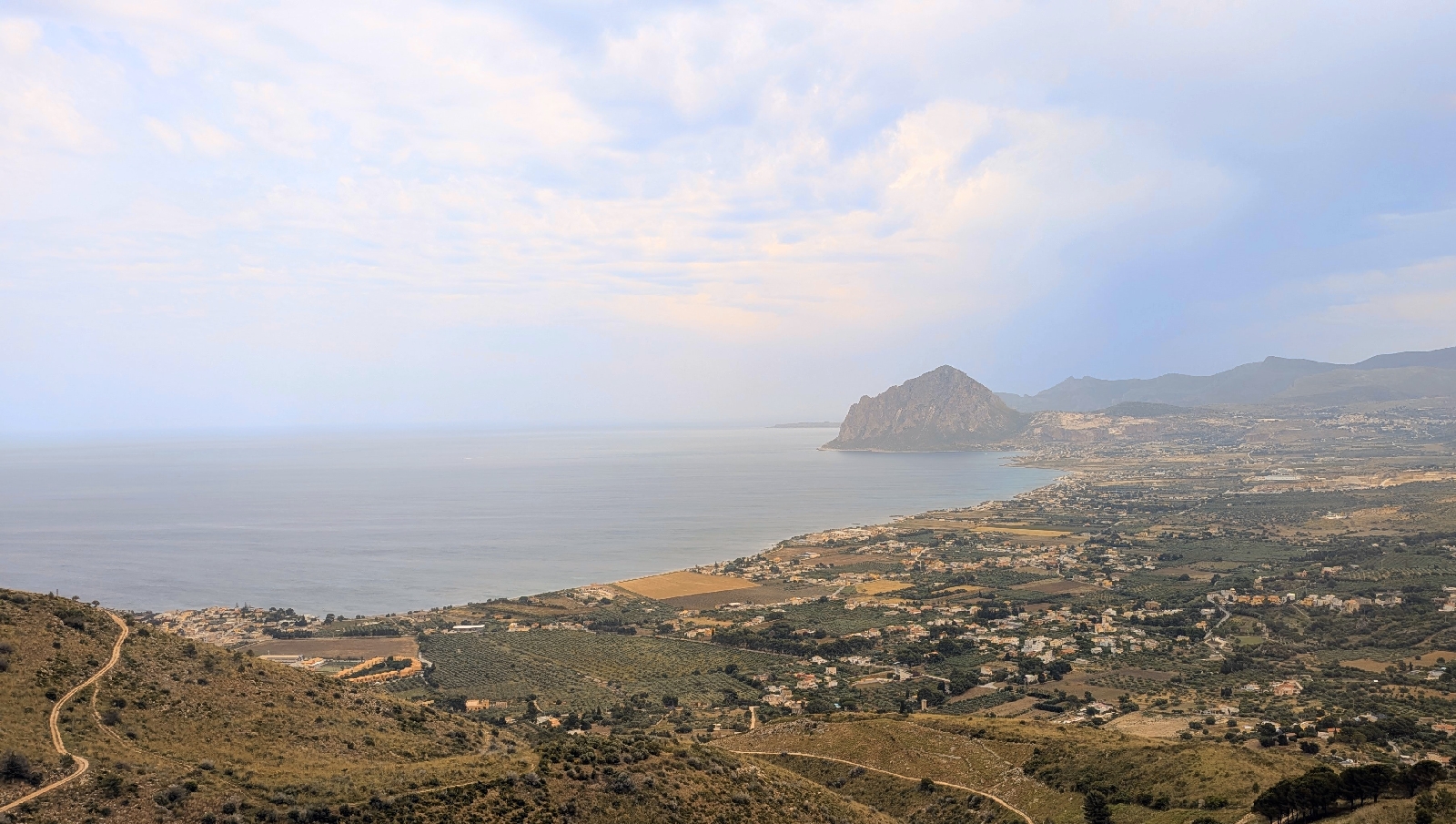On the road to Siracusa
Friday May 23, we took the bus to Siracusa Sicily, but really, a part of Siracusa called Ortigia, an island connected to mainland Siracusa by two short bridges.
But first, on the way to Siracusa, we stopped to tour at a Roman Villa filled with mosaics. It is a world UNESCO site called Villa Romana del Casle. These well preserved mosaics are in a ruined palace/villa, in the middle of the island of Sicily. From this early 4th century AD villa, we saw the largest (38,000 square feet) Roman mosaic collection ever found together on site. The reason they are so well preserved are 2 fold. Luckily, the palace is in a remote area, but it was also blocked by a landslide in the 1100’s, so looters were never able to wreck the site.
The villa was built during the end/decline of the Roman Empire, when the wealthy chose to move away from the cities and the inevitable fall. Mosaics were used to add beauty but to also add traction to the floor. The Roman’s were masters of micromosaics, and you will see that in some of the pictures. Just for lighting sake I did enhance some of the pictures so they would print better in a book. But other than that, they were as you see them. I thought I would try to take you on the walk we took, so on the way in, the first thing we passed were the aqueducts and the bath houses.
The Roman’s were also masters of engineering and they channeled water thru aqueducts from the nearby Gela River, for their baths and household needs. Romans were obsessive about their baths and cleanliness, and the baths take up a large area in the villa. Pictured above are the cisterns that processes the water after the aqueducts. One was used just for the baths.
These are bathing areas. Above was for the family. Below is the center area for the public baths. Notice how well preserved the tiles are. In the public baths area, there were successive baths and saunas, all at different temperatures to help to cleanse the body. At one point, the body is covered in oil and some type of mud or sand and all that is scrapped off with a tool. That is probably why the Romans were so hairless.
More of the baths pictured above and below was the bathroom. Everything was communal without any distinctions for gender.
Little to nothing is known about the owners, but one thought is that the owner was a dealer in exotic animals from North Africa and the Middle East. In this entrance hall pictured in the next 3 pictures, it is thought that all of the depictions of animals on the tile floor were like his catalog for customers.
I loved the women’s gymnasium entrance and mosaics as well as the frescos still showing on the wall.
There were so many mosaics that they were even on some of the walkways we had to cross (that’s my foot).
While it looks like a wall, the above mosaic is on the floor. Below, along with the floor mosaics you can see more frescos on the wall.
This round room was the center of the family living quarters. It was designed this way to have access to all the rooms which beached off the circle
In the scene above is Cyclops, called Polyphemus. A one eyed giant that threw rocks off of Mt Etna and into the sea because he was blinded by Odysseus (who subsequently escaped). In this version rather than one eye, he has three eyes.
Here’s Christine headed into the old barn for our lunch!














































Oh my goodness!! Those mosaics!! What an incredible work of art and it all gets walked on! What an amazing place!
ReplyDelete